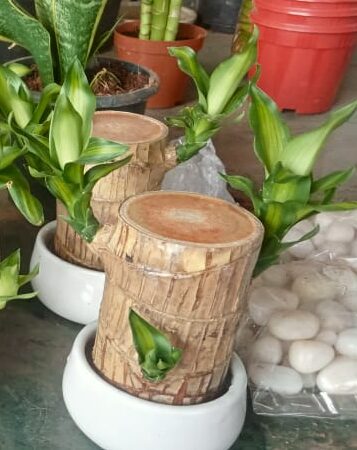Brazilian Lucky Wood is a popular term often used to describe certain plants or wood types associated with good fortune, prosperity, or ornamental value. While there isn’t a single species officially named “Brazilian Lucky Wood,” the term is commonly linked to plants like Pau-Brasil (Caesalpinia echinata) or other ornamental woods native to Brazil. Here’s an overview of related possibilities:
1. Caesalpinia echinata (Pau-Brasil)
- Common Name: Brazilwood or Pernambuco wood.
- Significance: Historically important as Brazil’s national tree and a source of red dye. It is also prized for its use in making high-quality violin bows.
- Features:
- Wood: Dense, hard, and reddish-orange with a smooth texture.
- Leaves: Fern-like and vibrant green.
- Flowers: Yellow with red centers, adding ornamental value.
- Cultural Value: Often associated with luck, strength, and resilience due to its rarity and historical significance.
2. Lucky Bamboo
- Scientific Name: Dracaena sanderiana (not native to Brazil but globally popular as “lucky wood”).
- Use: Often marketed as “Brazilian Lucky Wood” due to its symbolic association with good luck and prosperity. It is used in Feng Shui to attract positive energy.
- Care:
- Grows well in water or soil with minimal maintenance.
- Thrives in indirect light.
3. Other Ornamental Brazilian Woods
Brazil is home to several unique woods and plants with rich folklore and aesthetic value, including:
- Jacaranda (Dalbergia nigra): Known for its stunning grain and use in fine furniture and musical instruments.
- Ipe (Tabebuia): Prized for its strength and used in decking and outdoor structures.
Tips for Growing or Using “Lucky Wood”
- Ensure the plant or wood is sourced ethically, especially for rare species like Pau-Brasil.
- If it’s a living plant, provide adequate sunlight, water, and well-drained soil.
- Incorporate it as a decorative item or in garden spaces to enhance its lucky symbolism.
Would you like a detailed blog or product description tailored for your website?



